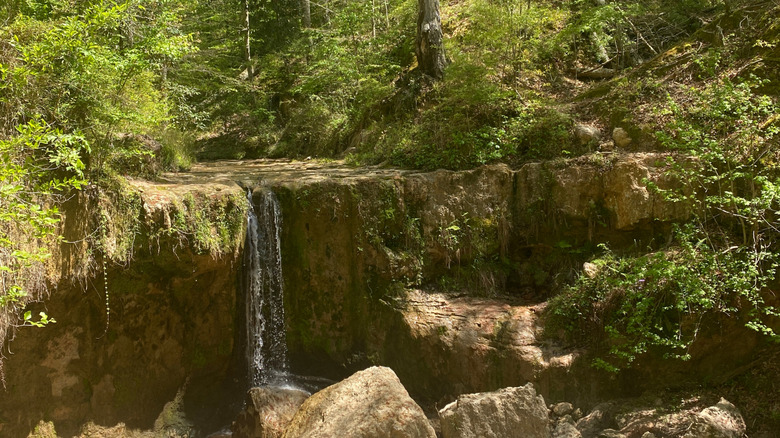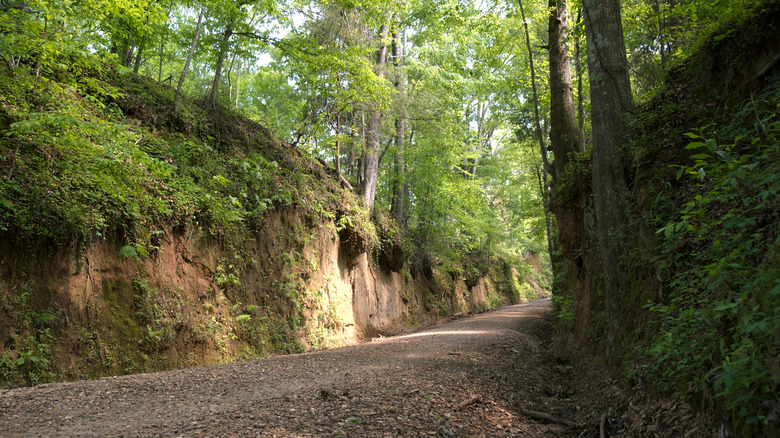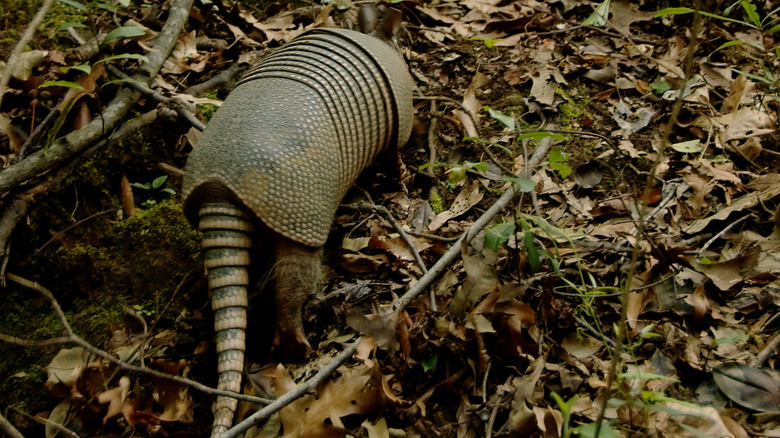Louisiana's Scenic Forest Right Outside Baton Rouge Is Packed With Nature Trails And Outdoor Recreation
America's backcountry settings offer a grab bag of natural goodies, especially in the Pelican State. From Northshore, a region that's home to tranquil marshlands, to the Maurepas Swamp, one of America's largest swamp forests, there are so many places that offer a respite from modern life's constant churn. Tunica Hills, right outside Baton Rouge, provides that refuge with thrilling outdoor recreation thrown into the mix. The scenic forest's nature trails and unique topography offer a diverse look at Louisiana's wild side.
The 6,500-acre wildlife management area offers visitors a smorgasbord of activities and wildlife. The area is split into two separate tracts of bluffs, hills, forest, and ravines. The terrain creates a singular habitat for wildlife you won't find anywhere else in the Pelican State. Hiking and camping are mainstays, though the sheer variety of creatures roaming the area may be the icing on the proverbial cake of any visit.
As a Louisiana Wildlife Management Area, Tunica Hills is a tightly regulated slice of nature. Educate yourself fully about local regulations, borders, designated camping sites, and licensing requirements. Some parts of the area may have limited availability.
Hike, hunt, or sleep at Tunica Hills
Tunica Hills features three hiking trails, each with a unique view of the forest and phenomenal landscape, as streams and waterfalls create a delightful soundtrack. Taken during the autumn's changing season, an average hike along any of the six miles of trails becomes a psychedelic explosion of colors. The area's loess bluffs, formed by dust storms blown in from the western plains centuries ago, create an imposing environment. Those looking to mix education and pleasure should take Trail B, a 3-mile stroll filled with informational signs about the area's wildlife. Bikes and horseback rides offer a different, often less-taxing way around the area.
During your walks, keep your eyes and ears open. Expect squirrels, chipmunks, white-tailed deer, and a menagerie of native birds, including the Cooper's hawk and worm-eating warbler, to make cameos along the trek. Marksmen hunkering for some wild game will find plenty to aim at. Small game and wild turkey, as well as deer, remain staples. Trapping for bobcat, raccoon, and coyote, among other species, is permitted, too. Locals especially maintain their long-standing love of catching their own meals. Louisiana has detailed hunting regulations, with limited seasons and licenses. As always, respect local laws and regulations.
If you want to get truly intimate with the wildlife, spend the night. It offers the best way to enjoy Tunica Hills' diversity. Tent-only, primitive areas are available in designated areas.
The ins and outs of visiting Tunica Hills
Tunica Hills is about 50 miles north of Baton Rouge, and a one-hour drive from its airport. If you need a calm place to layover along the way, spend a day in St. Francisville, a river town with southern charm and unique shops about half an hour away.
Plan your visit for spring or fall; hiking trails explode with life and when the weather is mild. The wildlife puts on a real show. Avoid the sultry, muggy summers if you can. Regardless of when you visit, start your excursions early. It increases the odds of seeing wildlife while also beating the afternoon heat. Bring hiking boots, water, sunscreen, a hat, bug spray, and a tent if you plan to spend the night. Some hiking trails are poorly marked, so a compass and a map are solid safety precautions. Be mindful of regulations, no matter what you decide to do or how long you stay. Access to the Wildlife Management Area is sometimes restricted during parts of the hunting season, including for hikers, so check ahead.


